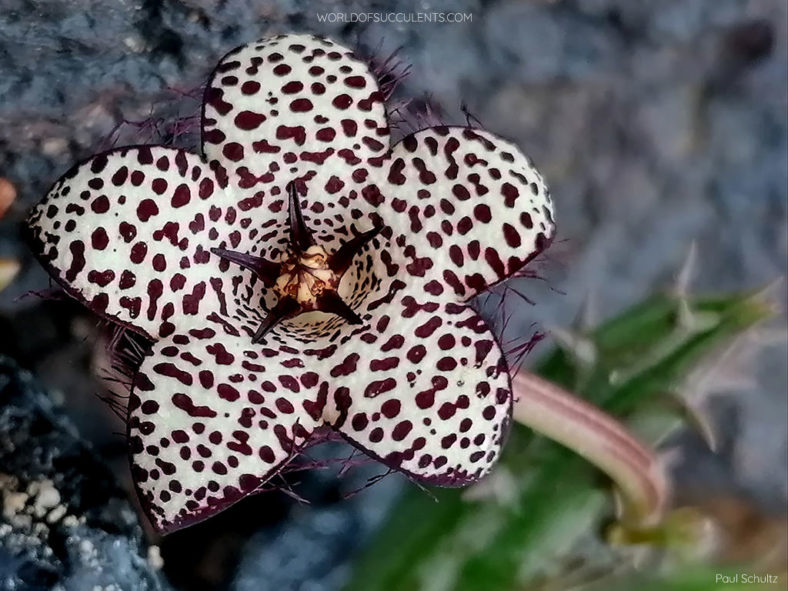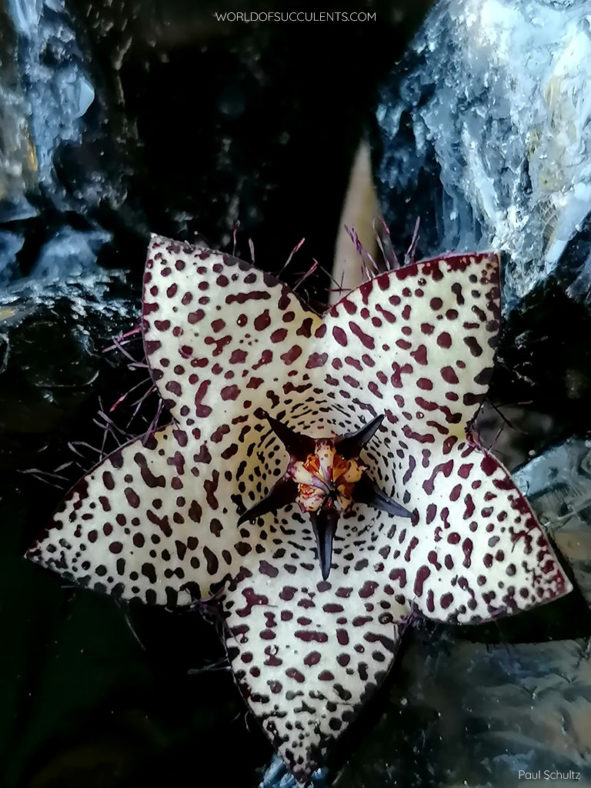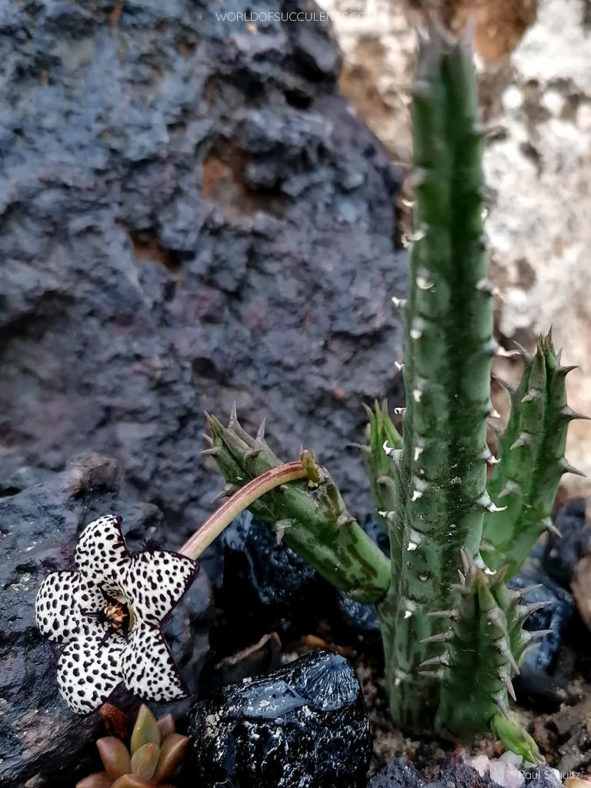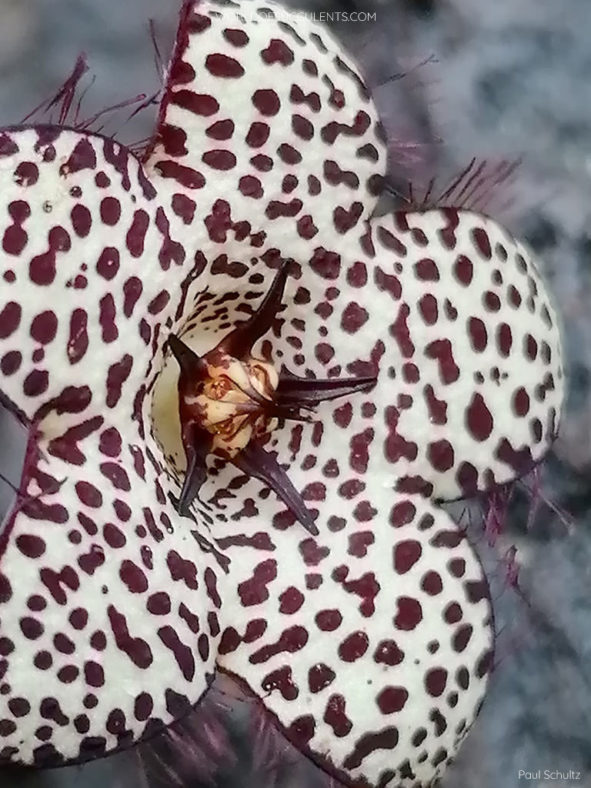Scientific Name
Tridentea jucunda (N.E.Br.) L.C.Leach
Synonym(s)
Ceropegia ausana, Stapelia ausana, Stapelia jucunda
Scientific Classification
Family: Apocynaceae
Subfamily: Asclepiadoideae
Genus: Tridentea
Etymology
The specific epithet "jucunda (pronounced joo-KUN-duh)" means "pleasant, delightful, pleasing" and refers to the plant's attractive appearance.
Origin
Tridentea jucunda is native to southern Namibia and western South Africa (Free State, Northern Cape, and Western Cape). It grows in loamy flats under bushes.
Description
Tridentea jucunda is a small succulent that forms a clump of smooth stems with four angles marked by rows of low tubercles. The stems are up to 4.8 inches (12 cm) long and 0.6 inches (1.5 cm) thick. Each tubercle bears towards the apex a leaf-rudiment that soon dries out.
The flowers are star-shaped, appear in late summer and fall, and can reach up to 1.4 inches (3.5 cm) in diameter. The corolla is pale green outside marked with dark purple, inside spotted with purple-brown, sometimes somewhat reddish, on cream, but quite often, these spots coalesce into a dark border along the edges of the lobes. The corolla lobes are ovate, spreading to recurved and sometimes with marginal cilia. They can measure up to 0.4 inches (1 cm) long, nearly equal at the base. The outer corona lobes are purple-brown, deltoid to bifid, while the inner ones are cream marked with purple, recurved above, and sometimes with a dorsal horn near the base.

How to Grow and Care for Tridentea jucunda
Light: T. jucunda grows best in full sun or partial shade. It will benefit from light shade during the hottest summer days. Indoors, place the plant near the brightest window in your home. It will stretch if it does not have enough sunlight. Avoid abruptly moving plants adapted to lower light levels to full sun to prevent sunburn.
Soil: You can use a commercial potting soil mix for succulents or prepare your own with 50 to 70 % mineral grit, such as coarse sand, pumice, or perlite.
Temperature: This plant thrives in warm outdoor environments with low to moderate humidity. It does not like winter cold and should remain fairly dry and warm during its winter dormancy. T. jucunda can withstand temperatures as low as 35 °F (1.7 °C). USDA Plant Hardiness Zones 10b to 11b, 35 to 50 °F (1.7 to 10 °C).
Watering: T. jucunda has typical watering needs for a succulent. Water your plant thoroughly during the growing season, from spring to fall, and allow the soil to dry between waterings. Do not water in winter. The plant goes dormant in winter and needs almost no water, about once a month.
Fertilizing: Fertilizing is a good idea to keep your plant healthy and thriving. Feed with water-soluble fertilizer diluted to half the recommended strength only when the plant is actively growing.
Repotting: Repot your plant in spring just before the growing season begins. T. jucunda has shallow roots and does not require too much soil to grow. Choose a container with drainage holes.
Propagation: The best way to propagate this succulent is by stem cuttings. Take cuttings during the growing season to ensure good rooting. T. jucunda is also easy to grow from seeds. Sow the seeds in spring.
Learn more at How to Grow and Care for Stapeliads.
Toxicity of Tridentea jucunda
T. jucunda has no toxic effects reported. It is safe around pets and humans.
Links
- Back to genus Tridentea
- Succupedia: Browse succulents by Scientific Name, Common Name, Genus, Family, USDA Hardiness Zone, Origin, or cacti by Genus
Photo Gallery
Click on a photo to see a larger version.


